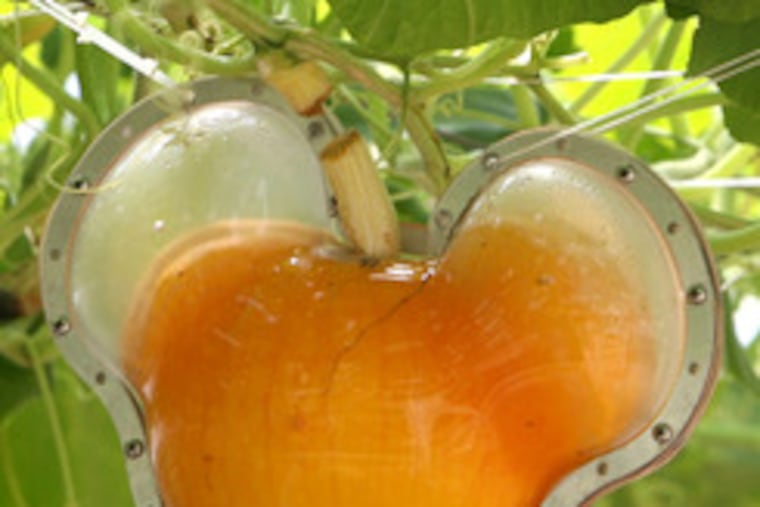
ORLANDO, Fla. - Deep inside the laboratories of Epcot's The Land pavilion - beyond the world-record tomato tree or the Mickey Mouse-shaped pumpkins - a tiny part of one of Walt Disney's dreams is being kept alive in petri dishes.
Visitors' only brush with science there might involve Epcot's programs to grow lettuce in water or to shape vegetables like Mickey Mouse. Yet more complex, far-less-known, potentially more practical and possibly controversial work has been going on side by side with those show projects for years.
In some of those tiny dishes, within microbiology laboratories walled off from the public, one of Epcot's primary missions is being cultivated specimen by specimen, cell by cell, gene by gene.
Real, high-tech science.
Scientists working in The Land labs for Disney and the U.S. Department of Agriculture's Agriculture Research Service are trying to alter nature's design for the pear tree on a molecular level.
Funded by and operating as a branch laboratory for a research project under way at a federal agriculture laboratory in Kearneysville, W. Va., the Epcot scientists want to create a new rootstock for pear trees that would stunt the growth of the trees, making them shorter and easier to grow and harvest, and therefore more productive and more commercially attractive.
And they are doing so by genetically altering the cells of pear-tree rootstock specimens.
"It's more than just a show," said Frederick L. Petitt, Walt Disney World's director of Epcot science. "This is pretty long-term research."
But unlike most Epcot research - such as projects involving pest management or dolphin communication - it risks powerful controversy. Genetic engineering of crops draws a high level of public suspicion and has harsh critics who deride the products as "Frankenfoods."
While the pear-tree work should not affect the genetic makeup of the pears, earlier projects at Epcot have had the goal of designing better food.
"I wouldn't think Disney would touch this project with a 10-foot Cinderella wand, but Disney isn't your grandfather's cartoon company anymore," said Nancy Allen, an activist with the Green Party.
Her group is part of an environmental coalition campaigning against the creation of genetically engineered trees - though not specifically the Epcot work - arguing that genetic engineering must be slowed so the consequences can be studied more carefully. "There just is no way to know what is going to happen in the long term, even for the growers," said Anne Petermann, co-director of the Global Justice Ecology Project.
Research-project director Ralph Scorza of the U.S. Agriculture Research Service said he thought such critics overlooked the extreme care taken in the research - and its potential benefits. That's one reason Epcot's labs were recruited.
"It does give us a chance to talk to people about the whole process, and about the safety of it, and the oversight," Scorza said.
One of Walt Disney's original plans for Epcot - which didn't open until 16 years after his death - was that it would be a center of cutting-edge science and technology. Walt Disney's vision was to build a full-fledged city, called the Experimental Prototype Community of Tomorrow, or Epcot for short.
Throughout today's version of Epcot, visitors are treated to "shows" of interesting but often old and relatively simple technology, such as The Land's hydroponic gardens, which allow Disney to grow the world's most prolific tomato "tree" or to create Mickey Mouse-shaped vegetables.
There is nothing simple about the pear-tree project.
"That laboratory in Epcot could just as well be a laboratory down the hall," Scorza said, talking recently by phone from his Kearneysville office. "People are doing the work that we need them to do for our program. It's not made for show. It's real research that we're doing. It's very important for the program. But also, we think, it has a story to tell."